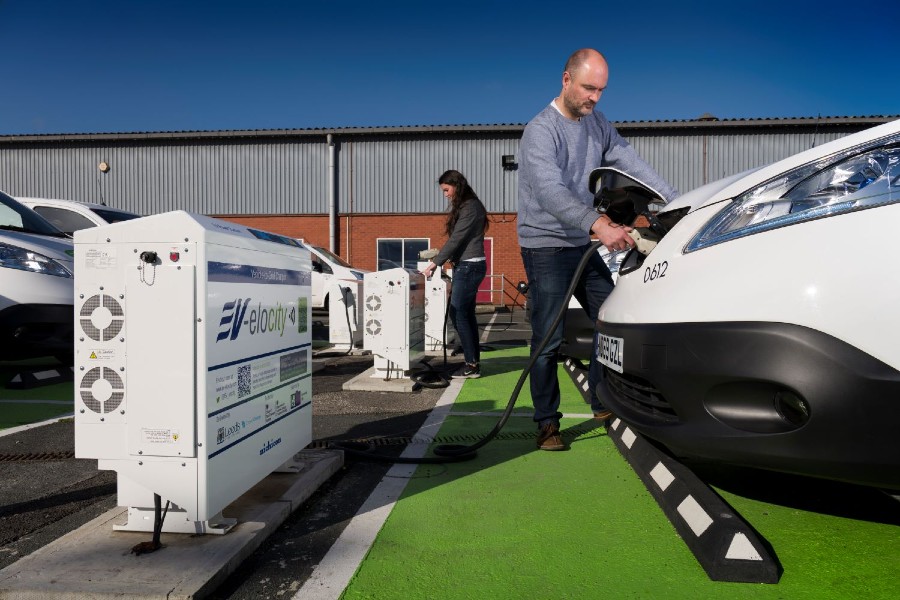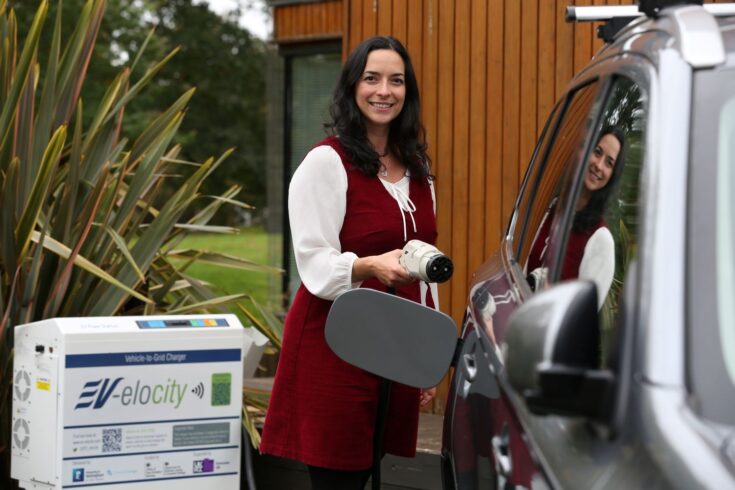Warwick researchers were working on a £4 million collaborative project called EV-elocity, part of the world’s largest and most diverse vehicle-to-grid (V2G) demonstration programme.
V2G is delivered by Innovate UK and funded with investment from the Department for Business, Energy and Industrial Strategy and the Office for Zero Emission Vehicles.
About the project
Extended battery life
EV-elocity was a project that looked at increasing the take-up of electric vehicles by helping consumers derive added financial benefit through V2G innovation.
The Warwick study found that simple measures could extend EV battery life by up to 12% even if it was being made to work harder, both charging and discharging energy.
Among the measures for keeping batteries in peak condition are to store them at room temperature and also to keep them neither at full nor very low states of charge.
Fellow academics at University of Nottingham also played a vital role by developing algorithms that respond to weather forecasts, fleet journey patterns and other external factors to predict charging need.

Leeds City Council Electric vans charging and discharging in the EV-elocity project (credit: EV-elocity)
Impacts of the project
Real-time decision making
The Nottingham machine learning technology can make real-time decisions on when to charge the battery, and when to feed electricity into the grid or to batteries in buildings or homes.
This innovation was founded on a detailed data collection exercise from trials in 15 locations with public and private sector fleet operators, including West Midlands Police and Leeds City Council.
The COVID-19 pandemic struck midway through the project but it actually presented an opportunity to gather data across a far wider range of scenarios than anyone could have anticipated.
Saving carbon and money
Chris Rimmer, project manager on behalf of the lead partner, Cenex, said:
COVID-19 dramatically changed the driving patterns of our car users. In some cases, we had vehicles that weren’t really driven at all. They were plugged in all the time, like static batteries.
Our project showed how quickly we could respond to a sudden change. We could see the software learning in the couple of weeks after the shutdown, adapting to the new normal. And by managing the battery carefully, we demonstrated how its health could be protected and life extended.
The EV-elocity project team found that a V2G unit can save around £100 annually per charge point on a normal energy tariff of £400 with the use of a smarter tariff. Yearly carbon savings can be up to around 450kg per V2G charge point when using carbon optimisation.
They concluded that through research and innovation V2G charging can provide the flexibility required for the transition to a net zero energy system.
Video credit: UKRI
On-screen captions and an autogenerated transcript are available on YouTube.
Further information
Find out more about V2G around the world.
View other V2G videos on our YouTube playlist.
Top image: Professor Lucelia Rodrigues, Nottingham University (credit: EV-elocity)

